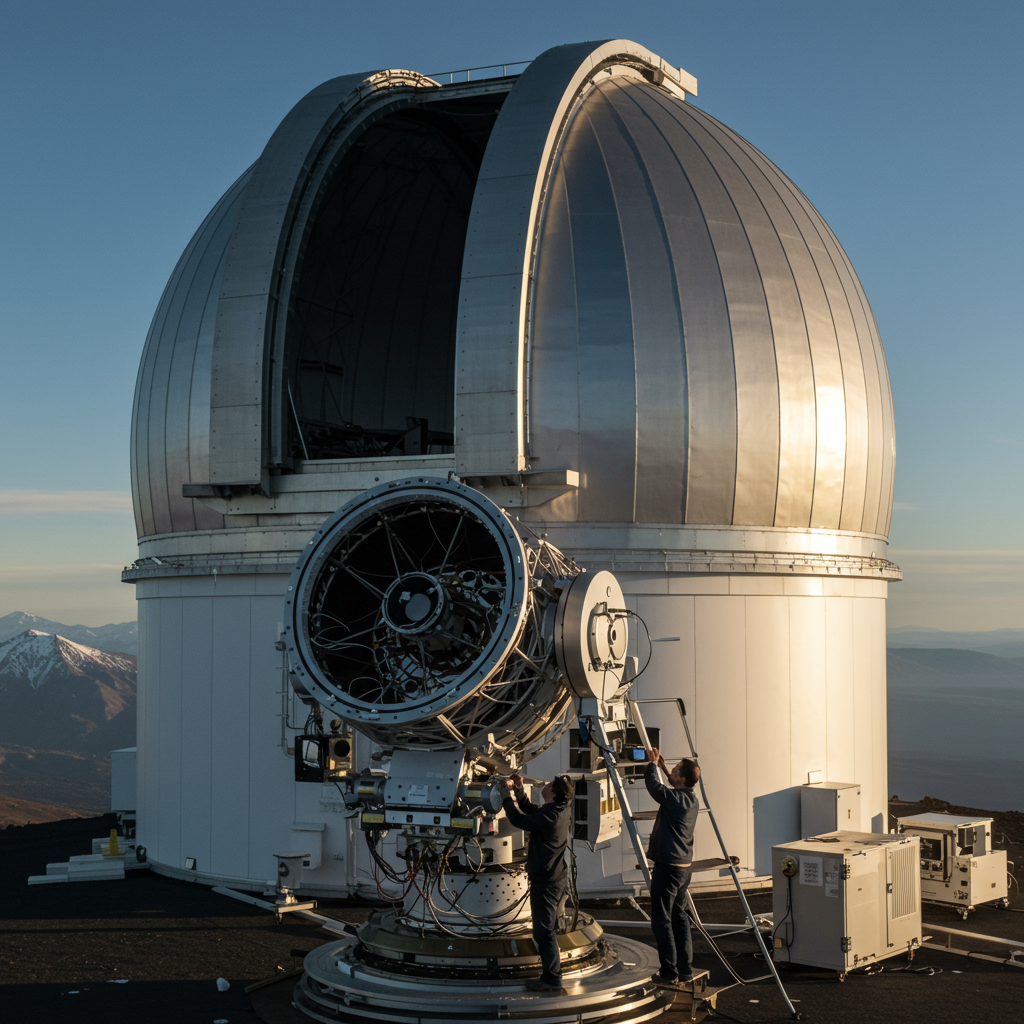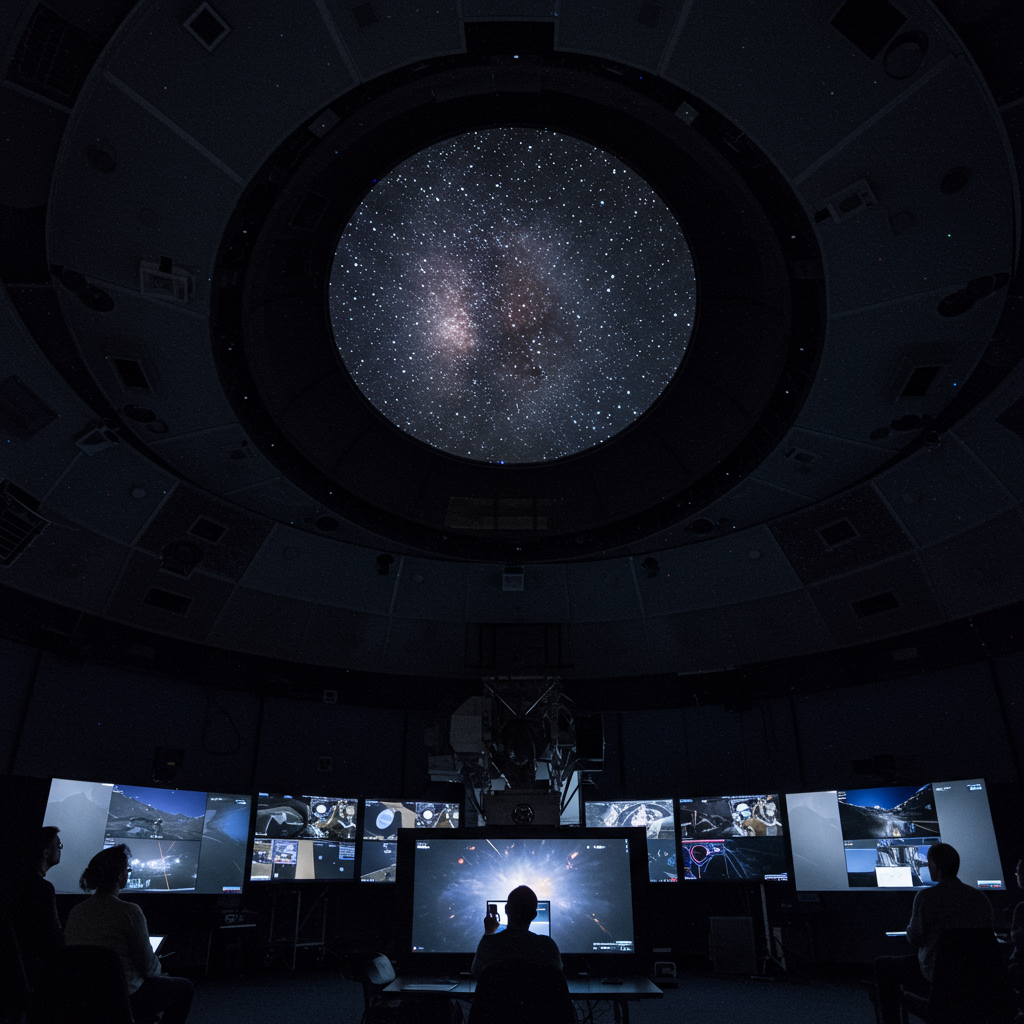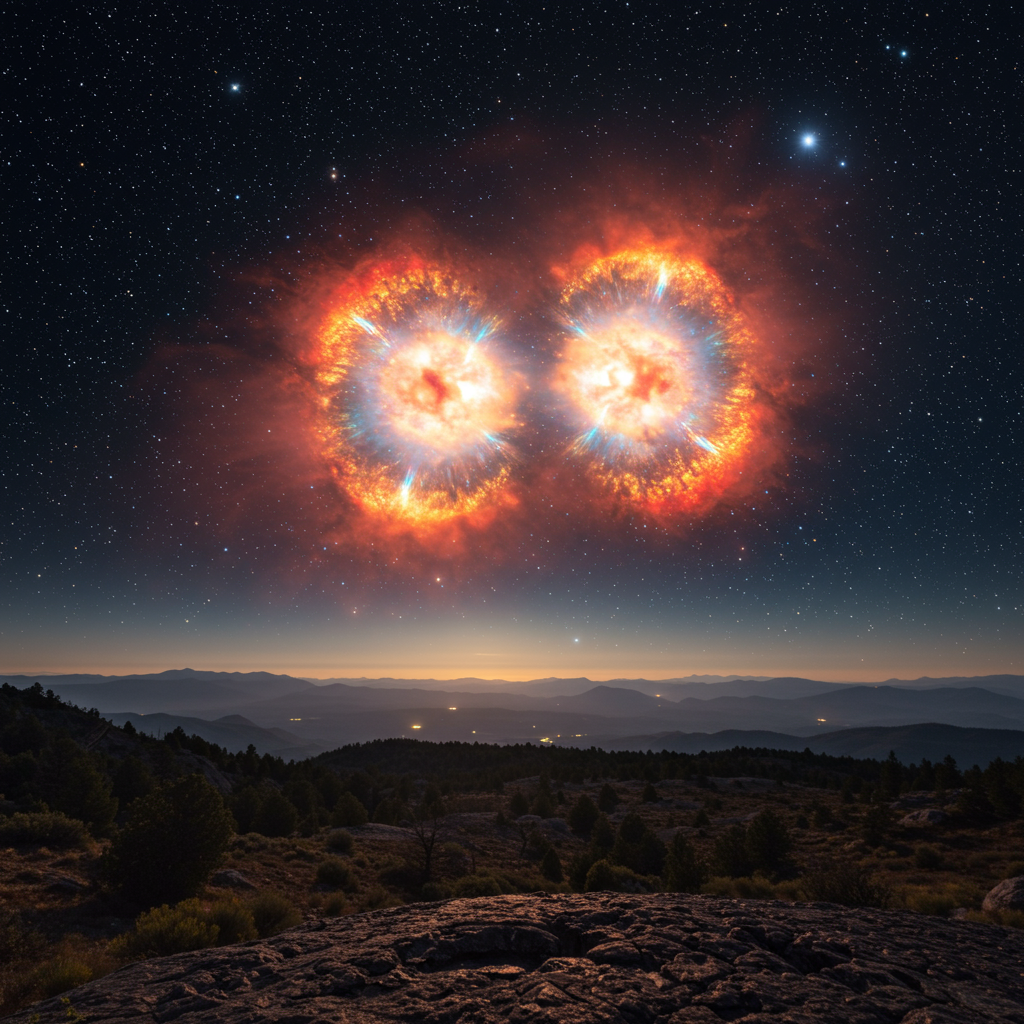A new era in understanding the cosmos is dawning. High atop Cerro Pachón in Chile stands the Vera C. Rubin observatory, poised to revolutionize astronomy. This groundbreaking facility has just captured its very first official astronomical images using the world’s largest digital camera. Scientists anticipate these initial snapshots are merely a glimpse of the unprecedented discoveries expected from a decade-long survey of the southern sky. This powerful new window promises to unravel mysteries from nearby asteroids to the far reaches of dark matter and dark energy.
The Vera C. Rubin Observatory is far more than just another telescope. Named after pioneering astronomer Vera Rubin, known for her crucial work hinting at the existence of dark matter, the observatory is designed for a unique mission: the Legacy Survey of Space and Time (LSST). Unlike telescopes that focus intensely on small areas, Rubin’s primary strength lies in its ability to rapidly and repeatedly scan vast swathes of the sky. Located in the ideal clear, dry air of the Chilean Andes, the observatory sits ready to document the dynamic universe like never before.
At the heart of this ambitious project is the LSST Camera. It’s not the observatory’s 8.4-meter primary mirror that steals the show, though it is precisely crafted to gather light with immense efficiency. The true star is the camera itself. Developed over nearly two decades by a global team including many from France’s CNRS and built by SLAC National Accelerator Laboratory, this isn’t just a camera; it’s a 3,200-megapixel (3.2-gigapixel) behemoth. Weighing around three tons, roughly the size of a small car but twice its weight, its resolution is astounding – equivalent to 260 modern smartphone cameras combined. Displaying a single image at full resolution would require hundreds of ultra-high-definition TV screens.
Unprecedented Detail and Scope
The sheer power of the LSST Camera is its ability to capture an incredibly wide field of view in a single exposure. It can photograph an area 3.5 degrees by 3.5 degrees, covering a section of the sky 45 times larger than the apparent size of the full moon. This capability, combined with its massive resolution, means a single image can reveal billions of stars and galaxies simultaneously. The camera sensors are kept at an ultra-cold -100°C to minimize noise and maximize clarity, granting it “superhuman” vision.
Integral to the LSST Camera’s function is its sophisticated filter system. The camera uses six massive color filters (labeled u, g, r, i, z, and y) spanning wavelengths from ultraviolet to infrared light. Each filter is 75 centimeters in diameter and weighs between 24 and 38 kilograms. A robotic system allows the observatory to swap these filters automatically in under two minutes. By taking rapid sequential images through different filters, scientists can determine the precise position, distance, and properties of observed objects.
The Legacy Survey of Space and Time Begins
The Vera C. Rubin Observatory’s core purpose is the LSST. This ambitious project will spend the next ten years scanning the entire southern hemisphere sky repeatedly. The plan is to capture 1,000 high-definition photographs every three nights using the various color filters. By compiling these sequential scans, scientists will create a high-definition, four-dimensional “film” of the universe, documenting how cosmic objects and structures change over time. Each region of the sky is expected to be imaged roughly 800 times over the survey’s duration. This allows the detection of transient events – things that move or change in brightness – which is a major focus.
The observatory is designed to map our night sky with unmatched speed and finesse. This capability is crucial for identifying faint and distant cosmic objects that might be missed by other surveys. The immense volume of data collected will be staggering, reaching approximately 20 terabytes every night, accumulating to around 500 petabytes over the full mission lifespan. This vast “treasure trove” of information will form a comprehensive catalog expected to include data on 17 billion observable stars and 20 billion observable galaxies.
A First Look: What the Initial Images Reveal
For this highly anticipated grand premiere, the Rubin Observatory released its first official astronomical images. These initial captures focus on the Virgo Cluster, a massive collection of galaxies located about 55 million light-years away, and areas within the Sagittarius constellation. The detail is mind-boggling; the main Virgo Cluster image alone contains an estimated 10 million galaxies. While too vast for direct human comprehension, a zoomable online version allows closer inspection.
Within this single, immense image, scientists have highlighted incredible specific objects, showcasing the observatory’s power:
A “Grand Design” Spiral Galaxy (Messier 61 or M61): Located within the Virgo Cluster, this stunning galaxy appears face-on, displaying prominent, well-defined spiral arms and a bright core likely housing a supermassive black hole. It offers a spectacular view of a galaxy similar in structure to our own Milky Way.
A Triple-Galaxy Collision: The image captures three spiral galaxies locked in a gravitational tug-of-war. They appear visibly stretched with bridges of matter forming between them, illustrating the cosmic dance of galactic mergers, which are common events in the universe’s history.
A Bright, Nearby Star: While the focus is on distant galaxies, the image also captures stars much closer to home, within our own Milky Way. These are easily identified by characteristic diffraction spikes and a reddish glow caused by light scattering.
A Gargantuan Galaxy Cluster in the Background: Peering beyond the foreground Virgo Cluster, the image reveals other, far more distant galaxy clusters. These appear as fuzzy, orange splotches, each representing billions of stars located billions of light-years away, demonstrating the large-scale structure of the universe.
A Pair of Galaxies Maintaining Their Distance (NGC 4411 and NGC 4411b): Two spiral galaxies appear side-by-side but are not merging. Despite their visual proximity, their significant actual distance (50 million vs. 70 million light-years) allows them to coexist independently.
A Cosmic Pancake (NGC 4343): This object appears as a flattened, disk-like shape. It is an edge-on spiral galaxy where the spiral arms are not visible, but the image might reveal its active galactic nucleus.
Unraveling Cosmic Mysteries
The data from the Vera C. Rubin Observatory is expected to fuel scientific discovery for decades. A key objective is to address fundamental questions in cosmology, particularly concerning the nature of dark matter and dark energy. As Professor Željko Ivezić, an expert involved in the project, notes, the observatory offers a unique opportunity to investigate these enigmatic components that make up the vast majority of the universe but remain largely mysterious. Vera Rubin’s own legacy in this field makes the observatory’s name particularly fitting for this mission.
Beyond cosmology, the LSST survey will significantly enhance our ability to monitor our own solar system. A major focus is planetary defense. The observatory’s rapid scanning capability is ideal for detecting asteroids and comets, especially those potentially threatening Earth. During trial phases, the telescope demonstrated this power by identifying over 2,000 new asteroids in just ten hours – a rate that far surpasses current global detection efforts. Imagine the number of new celestial objects, both within and far beyond our solar system, that will be cataloged and tracked over the next ten years.
The observatory is also perfectly suited for finding transient events like supernovae, the powerful explosions marking the death of stars, or tidal disruption events, where stars are torn apart by black holes. Its ability to image the entire southern sky every few nights means it can spot changes almost immediately, allowing other telescopes to quickly follow up with more detailed observations.
A Global Effort and Future Access
The Vera C. Rubin Observatory is a testament to global scientific collaboration. Funded jointly by the U.S. Department of Energy (DOE) and the U.S. National Science Foundation (NSF), its construction and operation involve numerous international partners. Scientists from around the world, including active participation from French scientists, are involved in the initial exploration efforts and planning for the massive data analysis ahead.
A significant portion of the immense data stream, 40% of the raw image data, will be stored and processed in France at the France Data Facility (IN2P3) managed by CNRS in Lyon. This data will be made accessible to scientists globally at regular intervals, fostering worldwide research and discovery for decades to come. This collaborative approach ensures the wealth of information generated benefits the entire scientific community. The observatory complements space telescopes like Hubble or James Webb, which offer deep, narrow views. Rubin’s strength is its wide-field survey, finding targets and monitoring large-scale cosmic evolution.
Frequently Asked Questions
What is the main purpose of the Vera C. Rubin Observatory?
The observatory’s primary mission is the Legacy Survey of Space and Time (LSST). Over ten years, it will create a comprehensive, time-lapse map of the entire southern sky. It does this by repeatedly scanning vast areas with its powerful camera. The goal is to study dynamic celestial objects and phenomena that change or move, such as asteroids, supernovae, and variable stars, while also collecting data to investigate fundamental questions about the universe’s structure, like dark matter and dark energy.
How does the observatory’s 3200-megapixel camera benefit astronomy?
The 3.2-gigapixel LSST Camera is the largest digital camera ever built for astronomy. Its immense resolution allows it to capture incredibly detailed images across an exceptionally wide field of view – an area 45 times larger than the full moon in a single shot. This unique combination of wide coverage and high detail enables the rapid mapping of the sky and the detection of millions of faint or previously unseen objects and transient events, creating a dataset of unprecedented scale and depth for scientists globally.
What significant objects were seen in the observatory’s first images?
The first official astronomical images captured by the Vera C. Rubin Observatory primarily showcased the Virgo Cluster and parts of the Sagittarius constellation. Within the main Virgo Cluster image, which contains an estimated 10 million galaxies, scientists highlighted notable objects like the “Grand Design” spiral galaxy M61, a rare triple-galaxy collision, nearby stars, distant galaxy clusters appearing as fuzzy splotches, and individual galaxies seen edge-on or side-by-side but not interacting due to vast distances.
A New Frontier in Cosmic Exploration
The unveiling of the first astronomical images from the Vera C. Rubin Observatory and its 3200-megapixel camera marks a significant milestone. It is more than just a technical achievement; it signals the beginning of the Legacy Survey of Space and Time, a project set to redefine our understanding of the universe’s evolution. From dramatically improving our ability to track potentially hazardous asteroids to shedding light on the mysteries of dark matter and dark energy, the data from this facility will drive discovery for decades. The horizon of what we can explore has just become infinitely vast, mirroring the cosmos itself.




